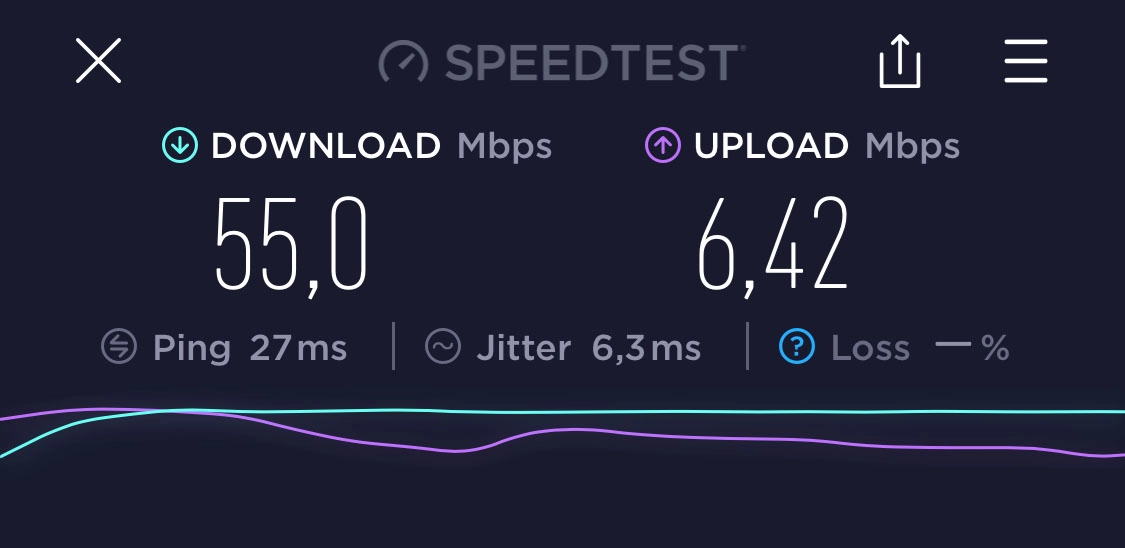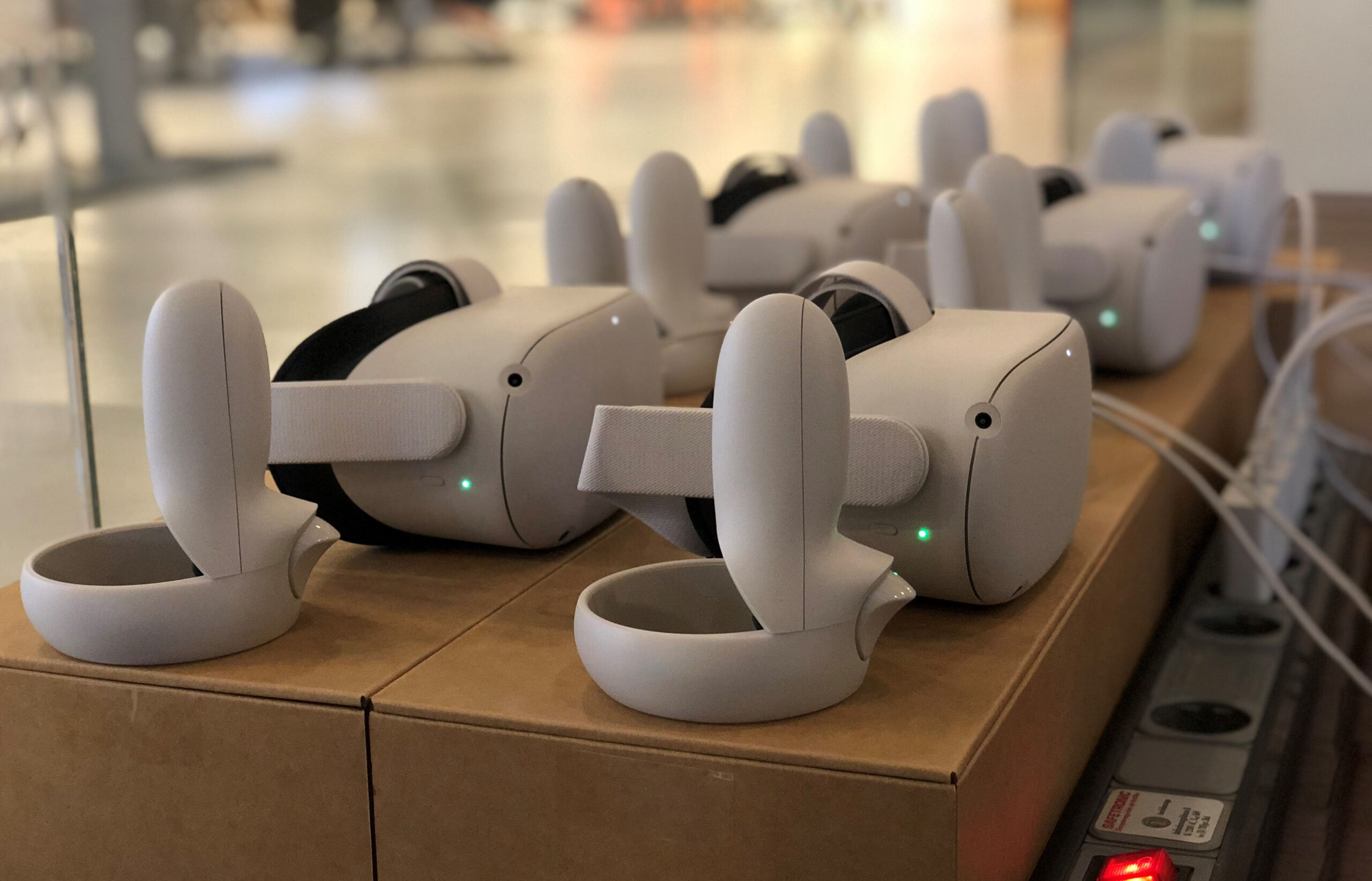Network Speedtest
By performing a Speedtest on your internet connection you can determine whether you have a stable connection. Depending on how you use Connec2, a low latency internet connection with enough bandwidth is recommended.
Although speedtest results aren’t the holy grail, they are a good indicator whether you are likely to encounter connection issues while using Connec2. Also; keep in mind you will only test your end of the connection: other users on less stable connections might still experience connection issues when you start using tools like remote desktop.
- Perform a speedtest on the same (WI-FI) network you want to use for your (standalone) VR headset.
- Compare your result to the 2 example images on this page to determine if it’s a stable connection.
There are a lot of free online speedtest providers, a popular one is Ookla. For more accurate test results (which include Jitter and Packet loss) we advise you to use one of their native apps for Windows, Mac, Android or iOS.

Example of a WI-FI broadband connection:
- High bandwidth (download / upload)
- Low latency (ping / jitter)
This internet connection offers a great experience for multiple connected users and all available features in Connec2.

Example of a Hotspot 4G connection:
- Low bandwidth (upload)
- Medium latency (ping / jitter)
This internet connection is not suitable for connecting a large group of people and / or high demand data streams such as remote desktop.
Information and images courtesy of Ookla
The numbers in the speedtest result represent various measurements, but what do they mean? Well it all depends on the use case: a couple of people having a conversation will need far less bandwidth than setting up a remote desktop stream to an entire group of people. Therefore, the recommended values are not necessities: in most cases you won’t need as much bandwidth.
- Download: How quickly you pull data from a server on the internet to your device (measured in Mbps).
- Recommended: 100 Mbps or higher.
- Upload: How quickly you send data from your device to the internet (measured in Mbps).
- Recommended: 50 Mbps or higher.
- Ping: Ping (or latency) is the reaction time of your connection (measured in milliseconds, lower is better).
- Recommended: 10ms or lower.
- Jitter: Jitter is a measure of the variability in ping over time (measured in milliseconds, lower is better)
- Recommended: 1ms or lower.
- Packet loss: Packet loss occurs when a packet of data is not received or is incomplete.
- Recommended: none.
- Mbps: Megabits per second, standard unit of measurement for internet speed (there are 8 bits in a byte).
- MB/s and kB/s: Megabytes per second and kilobytes per second, alternate units of measurement expressed in bytes, a standard measurement of file size.
Note: Most mobile hotspot devices (e.g. your phone or a 4G/5G MiFi router) aren’t as good in hosting a WI-FI network as their dedicated counterparts (e.g. your ISP provided WI-FI router at home) – meaning that although your mobile 4G/5G connection might be stable, the network device itself can’t properly distribute all the data to multiple connected devices at the same time without decrease in performance (!)
